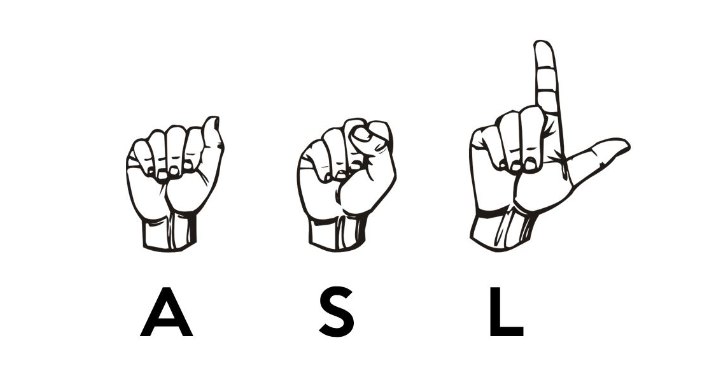
Have you ever been scrolling through social media or texting a friend and come across the abbreviation ASL? If you’ve been scratching your head wondering what it means, you’re not alone. The digital world is packed with acronyms and slang that can be tricky to decode. But don’t worry, in this article, we’re going to break down everything you need to know about ASL Meaning in slang terms. From its origins to its different meanings and how to use it in conversation, we’ve got you covered. Ready to dive in? Let’s go!
What Does ASL Stand For in Slang?
ASL is a simple three-letter acronym, but it can mean different things depending on the context. In slang, ASL primarily stands for “Age, Sex, Location.” It’s a phrase that originated from the early days of internet chat rooms when people were trying to get to know each other better. Back in those days, chatroom users would often ask “ASL?” to find out someone’s age, gender, and where they were chatting from. Sounds old-school, right?
However, as slang tends to evolve, ASL Meaning has taken on new interpretations, especially in social media and texting conversations.
ASL Meaning Over Time: From Chatrooms to Social Media
To truly understand the evolution of ASL Meaning, we need to take a little trip back in time. Picture this: the internet was young, and chat rooms like AOL and Yahoo Messenger were the places to hang out and make online friends. Conversations often started with “ASL?”—a quick way to break the ice and learn the basic details about someone.
Fast forward to today, and ASL is rarely used in that same context. It’s now more common in online games, TikTok, and text messages, often used ironically or humorously to mock the old days of the internet. But that’s not all! ASL has picked up an entirely different meaning, which is more emotional and expressive.
ASL in Modern Slang: “As Hell”
These days, people frequently use ASL to mean “as hell.” Yep, you read that right! It’s a slangy way to intensify something. Let’s break it down:
- “I’m tired ASL” means “I’m tired as hell.”
- “That party was lit ASL!” means “That party was lit as hell!”
See how the acronym adds extra emphasis? It’s become a casual, fun way to express extreme emotions or experiences. It’s all about the context and tone, so you can tell if someone’s using ASL in this newer, more relaxed way or if they’re talking about age, sex, and location.
Where Did the “As Hell” Meaning Come From?
Language evolves faster than you can say “LOL,” and ASL‘s new meaning is no exception. But how did it shift from “Age, Sex, Location” to “As Hell”? Like many slang terms, this usage likely evolved organically through social media and texting. Younger generations—who weren’t around during the early chatroom era—started using ASL Meaning in a way that was more relevant to their lives.
Think of it like slang recycling. Words and acronyms get new life when younger people reinterpret them in a fun, modern way. Before long, it spreads like wildfire across platforms like Twitter, TikTok, and Instagram. And let’s be honest—”ASL” sounds way cooler than typing out “as hell,” don’t you think?
How to Use ASL in Everyday Conversations
Now that we’ve got the different meanings of ASL down, let’s talk about how you can start using it in your conversations—without sounding awkward!
- In Texts and DMs: You can drop ASL into your texts or social media DMs when you want to intensify something. For example, if your friend asks how you’re feeling after a long day, you might say, “I’m exhausted ASL.”
- On Social Media: Twitter and TikTok are prime platforms to use ASL casually. For instance, if you’re tweeting about a concert you went to, you could say, “That concert was amazing ASL.”
- In Group Chats: Got a close-knit group of friends who love using slang? Throw in ASL when you’re sharing stories or reacting to something funny or frustrating. For example, “I’m craving pizza ASL right now!” would fit perfectly in a laid-back group chat.
Common Mistakes to Avoid When Using ASL
While using ASL Meaning might seem easy, there are a few common pitfalls to avoid if you want to sound like a pro. Here’s what to keep in mind:
- Know Your Audience: Not everyone will be familiar with the “as hell” meaning of ASL. If you’re talking to someone from an older generation or someone who doesn’t spend a lot of time on social media, they might assume you mean “Age, Sex, Location.” So, use it wisely!
- Don’t Overuse It: Like any slang term, overusing ASL can make it lose its impact. You don’t want every sentence to end with “ASL” because that could start to feel forced. Use it sparingly to add emphasis where it really matters.
- Context Is Key: Make sure the context of your conversation makes sense for using ASL. If the tone is too formal or serious, dropping a casual “ASL” might come across as inappropriate or confusing.
Other Meanings of ASL You Should Know
While “Age, Sex, Location” and “As Hell” are the two most common meanings of ASL, it’s worth noting that this acronym can have other interpretations as well.
- American Sign Language: This is the most official and widely recognized meaning of ASL. It refers to the primary language used by the Deaf community in the United States and parts of Canada. So, if you see ASL in the context of language or accessibility, it’s likely referring to American Sign Language.
- Airport Security Level: A lesser-known use of ASL refers to the security level at airports, but you probably won’t encounter this meaning unless you’re in a very specific field.
While these meanings are less common in everyday slang, it’s good to be aware of them, especially in professional or formal settings.
Why Understanding Slang Like ASL Matters
You might be wondering, “Why does it even matter what ASL means?” Well, in the ever-evolving landscape of language, especially online, keeping up with slang can actually help you in more ways than you think!
- Helps You Stay Connected: Whether you’re chatting with friends or engaging on social media, knowing slang like ASL helps you stay in the loop and feel connected to what’s happening around you.
- Enhances Communication: When you understand and use slang correctly, it adds a layer of relatability to your conversations. It shows that you’re up-to-date with the latest trends and can communicate in a way that’s relevant to your audience.
- Boosts Your Online Presence: If you’re running a blog, social media account, or any kind of online presence, using the right slang can make your content more engaging and relatable, especially to younger audiences.
Final Thoughts on ASL
ASL is one of those slang terms that has evolved significantly over the years. What started as a straightforward way to ask about age, sex, and location in early internet chat rooms has now become a versatile acronym with multiple meanings. Whether you’re using it to intensify a statement (as in “as hell”) or just throwing it out for fun, understanding ASL Meaning and its various contexts will help you navigate online conversations like a pro.
So, the next time someone drops ASL into a chat, you’ll visit Think Sky Less, and you might even impress them with your slang knowledge. Now that you’ve got the scoop, go ahead and start using ASL like a boss!




